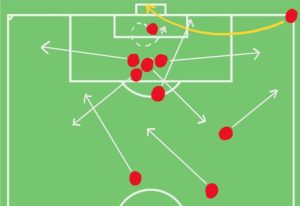How to analyze set piece details on “one look”
One of the big projects I’ve been working on over the summer (aside from finding a new club) is putting together match reports on one look. A full opposition report based solely on notes taken at the game.
As you might already know this is bloody difficult. Football has a ton of things going on at the same time. You could fill pages of notes based on a photo of a game let alone 90 minutes.
It seemed important that I work on this. But how to go about it?
Well, I started with analyzing set pieces, and I go into detail about that below. First, a bit of theory.
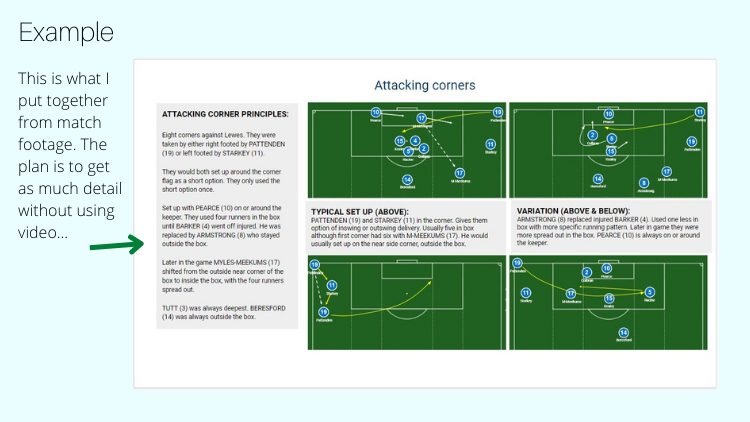
I’m a big fan of deliberate practice, the theory at least even if I don’t always practice it well.
What is deliberate practice?: Identifying the specific actions or practices you can work on to get better at some sort of skill.
How Deliberate Practice works
There are a lot of great books written about this. Not least Peak by Anders Ericsson, but also So Good They Can’t Ignore You by Cal Newport.
The idea is to identify what skills experts possess. Then break down those skills into things you can practice specifically.
Take the example of learning guitar.
One technique used by professional musicians is to play complicated sequences at a much slower speed.
Then, when they’re able to play whatever it is they’re practicing at that speed without errors, then switch it up a notch, increasing the speed.
They continue to do this until they can play at full speed – and without making a single mistake.
This is actually an analogy Newport uses in his book.
It’s not enough to randomly practice the guitar (three-chord Nirvana covers that you enjoy playing). You need to push yourself to improve. Which tends not to be fun.
So let’s get back to football. How might this apply to live match reporting?
Applying Deliberate Practice to match reports
I don’t know about you, but I find I can get a lot of detail on what a team does with the ball when watching a game. I can also get a decent amount of detail on how they defend. But hardest of all are set pieces.
It’s here the detail seems endless. And you have only a short period of time to get everything down.
So the problem to solve is how to get a useful level of detail with one look.
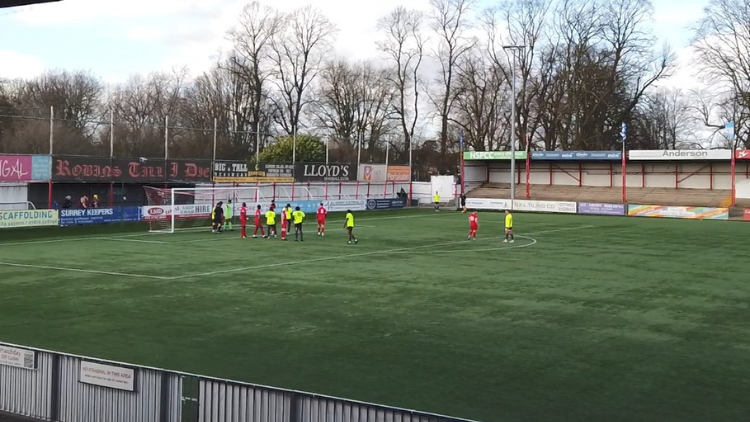
That’s where the guitar analogy comes in handy. What if you could mimic that sort of practice to increase the level of detail gained from, say, corner kicks?
Set piece practice drill
I eventually came up with a practice drill. If you’re interested at all, the steps are below. I went back to games I recorded last season at Step 3 and picked out a few featuring plenty of set pieces. (If you don’t have access to videos like this you could easily do the same by watching videos on YouTube.
- Once you have set pieces to watch get your notebook ready. More on this in just a second.
- Watch the corner kick three times. Don’t write anything down. Just watch three times trying to mentally note everything you’re seeing.
- When you’re done watching, then you write down all the detail you remember in your notes.
- Repeat this with another corner. Watch three times and get as much detail as possible.
- When you have a few set pieces watched, go back through them and watch in more detail, pausing the video if you need to. Make a note of what you missed. Focus on these points next time.
- Next, you do the same but watch only twice. See if you can get the same detail. Remember to repeat the review process.
- You can probably guess the final part. Now switch to watching just once and review in exactly the same way. Again, remember to go back and check what you didn’t see the first time around.
By the end of the process, you’ll instinctively spot more detail. Or know how to play the guitar.
You could use the same process but make notes as you go. But I find that looking down for even a fraction of a second – to make sure my pen is positioned correctly, for instance – is enough to miss a crucial detail. (I’ve missed goals this way). So if I can I’d prefer to concentrate on watching.
As a practice drill, it’s working so far. I’m getting more detail and refining my thought process before I make notes.
Super-efficient note-taking
There’s another thing you can do which is a really useful way of capturing things you might not have noticed the first time around. It’s all about making what you look for, and what you then note down as super efficient as possible.
For instance, I mentally note the number of players in the six-yard box, in the “second” six-yard box, and then those along the 18-yard line.
So “2-4-1” in my notes might suggest:
- Someone on the goal line marking the player blocking the keeper.
- Someone on the near post
- Four man-markers
- One player on the 18-yard-line
I don’t try to get exact positions as they tend to be constantly moving. But getting these numbers gives me a good idea of how they set up.
There’s one other thing I’ve realized that’s almost as helpful as knowing what to look for as the corner is taken, and that’s a checklist.
Use a checklist to fill in the gaps
I use this after the corner. It’s a quick way to fill in the gaps you might not have got the first time.
For instance, your checklist might have “How did the keeper react”.
You might have missed this first time around, but thinking back you’ll remember he stayed on his line or got stuck behind a bunch of players.
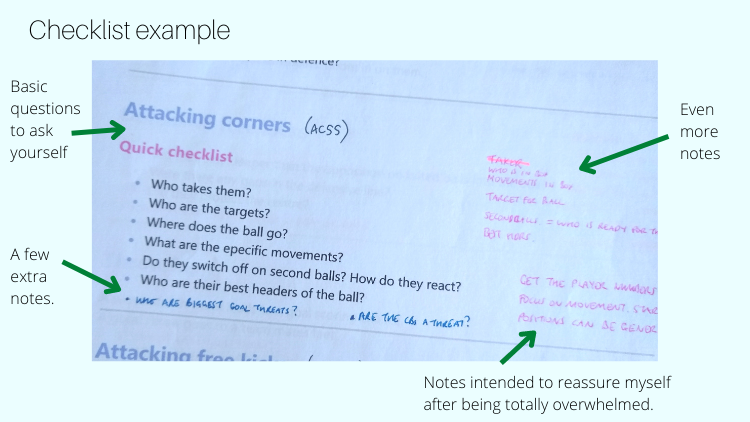
All this sounds well and good, but typing it out reminds me how big a task it is.
Like I said before, there’s endless detail. So I’ve had to accept that I won’t get everything. But already I notice I get more when tuned in and ready.
Using pitch templates
I also find having a pitch template works best. Here’s an example.
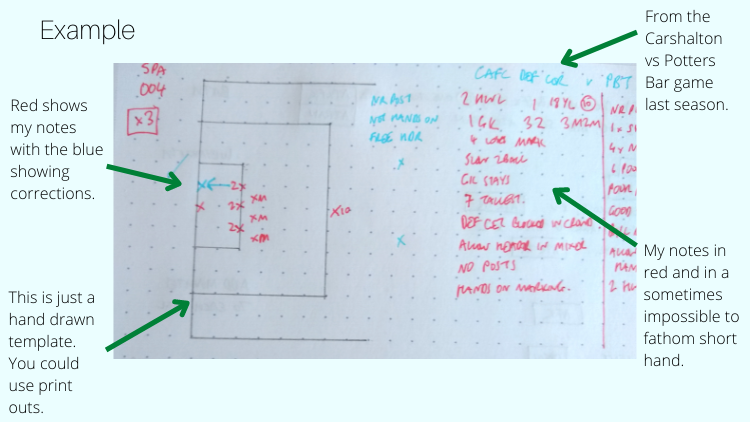
I used a red pen for my notes. Then a blue pen when I went back over the corner in more detail to check. Again, I’m not looking for exactly right. I’m looking to get as much (accurate) detail as I can.
It’s time-consuming. A bit frustrating. And it doesn’t exactly mimic being at a game. But it’s as close as I can get. And it seems to be working.
The next part of this process is to try it with other phases of the game. My hunch is it might not work as well for other phases of the game, but I’ll see.
Anyway, this might help you if you’re on a similar mission. Either way, I’d love to hear what you think, or what you do to get the same results.
Thanks for reading. If you enjoy posts like this, but don’t like checking back again and again for new posts on a blog that doesn’t get updated all that frequently… then you can sign up to receive these posts by email. Sign-up rising the box in the top right corner of this page.
